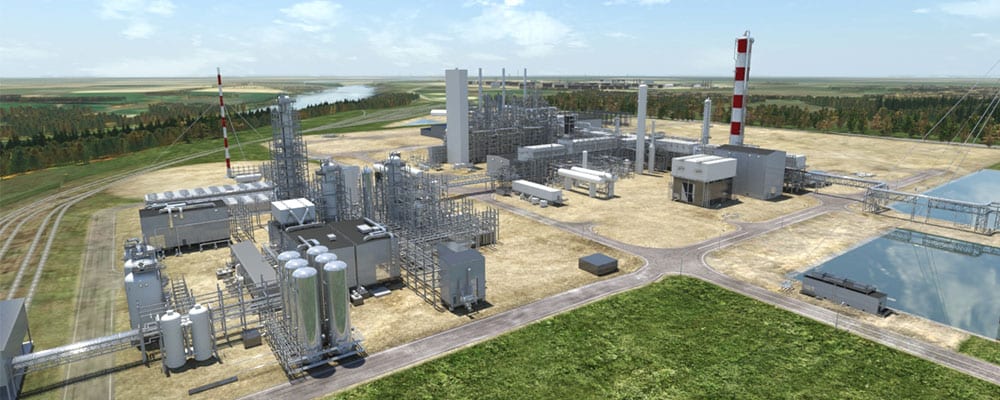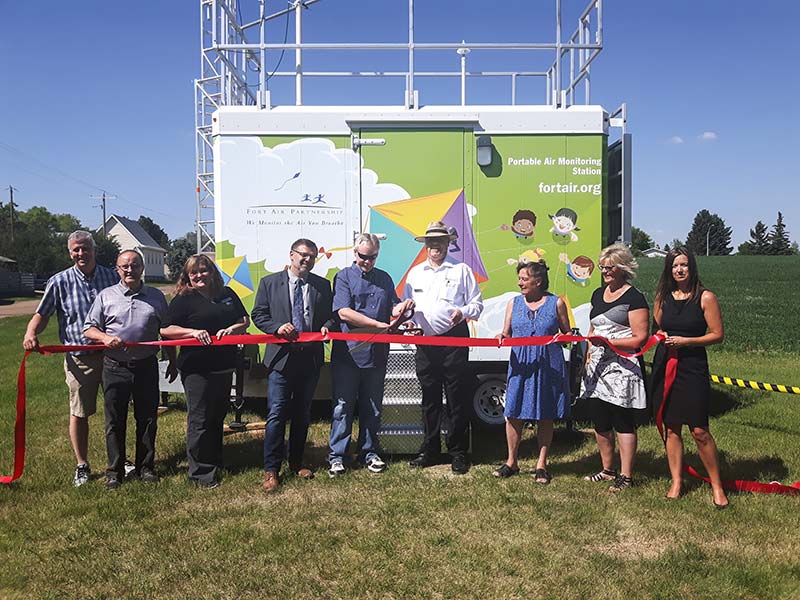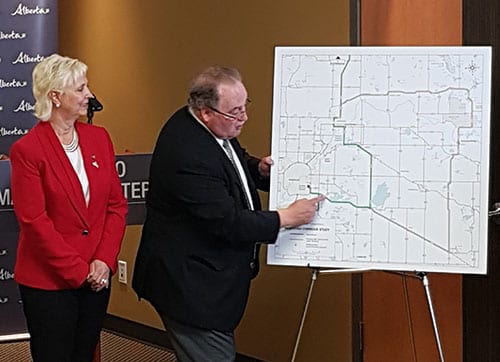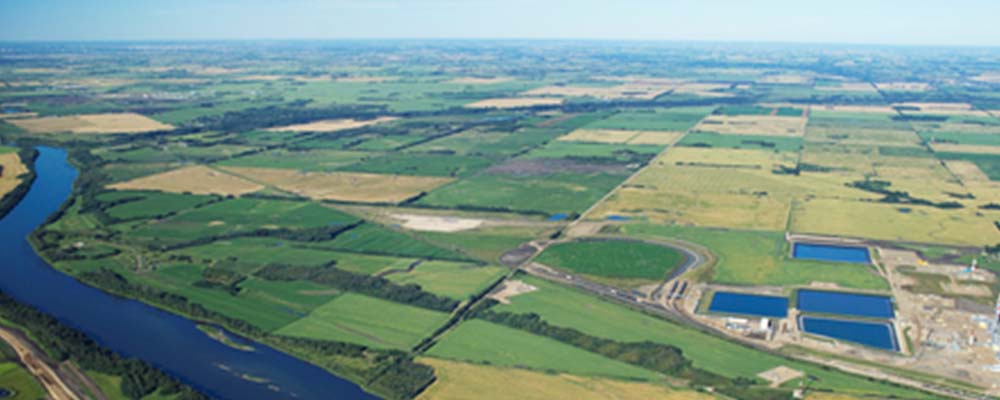Newsletter: Summer 2018
[cs_content][cs_section parallax=”false” separator_top_type=”none” separator_top_height=”50px” separator_top_inset=”0px” separator_top_angle_point=”50″ separator_bottom_type=”none” separator_bottom_height=”50px” separator_bottom_inset=”0px” separator_bottom_angle_point=”50″ style=”margin: 0px;padding: 0px;”][cs_row inner_container=”false” marginless_columns=”false” style=”margin: 0px auto;padding: 0px;”][cs_column fade=”false” fade_animation=”in” fade_animation_offset=”45px” fade_duration=”750″ type=”1/1″ style=”padding: 0px 0px 20px;”][cs_text]
Newsletter: Summer 2018
[/cs_text][/cs_column][/cs_row][cs_row inner_container=”false” marginless_columns=”false” style=”margin: 0px auto 20px;padding: 0px;”][cs_column fade=”false” fade_animation=”in” fade_animation_offset=”45px” fade_duration=”750″ type=”1/1″ style=”padding: 0px;margin-top: -20px;”][cs_text]
Heartland Gears up for Turnaround Season
[/cs_text][x_columnize]
It is that time of year again when facilities in Alberta’s Industrial Heartland take advantage of warmer weather. For many companies, spring signals the start of turnaround season and the continuation of construction projects.
Maintenance Is a Must
Just like your vehicle and home, industrial facilities require regular maintenance to keep them operating safely and efficiently. Companies schedule turnarounds to decrease or stop production so that certain maintenance tasks can be completed. Depending on the facility, a turnaround can last as short as a few days, or up to a month or longer.
The work completed during a turnaround involves equipment inspections and, if necessary, repairs, replacements, and technology upgrades. Particularly on older facilities, new technology can improve an operation’s environmental performance and help increase productivity.
Impact of Industrial Activity
Construction and turnarounds generate additional local spending on goods and services. They also create employment, as extra manpower is required to complete these projects. This added manpower may result in a noticeable increase in traffic on local highways. Turnarounds may also generate additional noise or visible activity as maintenance work is completed.
Curious About What You See, Hear or Smell?
Many companies use the UPDATEline to keep the community informed about turnaround and construction activities. Call the UPDATEline at 1.866.653.9959 to access pre-recorded messages about industry activity 24 hours a day.
Notable Turnarounds and Construction
Construction activities at North West Redwater Partnership’s Sturgeon Refinery site are expected to be complete this spring with commissioning and start-up activities running throughout the summer. Companies with planned turnarounds this year include:
| Spring Mar/Apr/May |
|
|
| Summer Jun/Jul/mid-Aug |
|
|
| Fall Late-Aug/Sep/Oct |
|
|
[/x_columnize][x_columnize][/x_columnize][/cs_column][/cs_row][cs_row inner_container=”false” marginless_columns=”false” style=”margin: 0px auto 20px;padding: 0px;”][cs_column fade=”false” fade_animation=”in” fade_animation_offset=”45px” fade_duration=”750″ type=”2/3″ style=”padding: 0px;margin-top: -20px;”][cs_text style=”background-color: #efefef;padding: 20px 30px 20px 30px;border: 1px #ccc solid;”]
Second Round of the Petrochemicals Diversification Program Rolled Out

A rendering of Inter Pipeline’s new petrochemical complex
under construction in Alberta’s Industrial Heartland.
A second round of the provincial government’s Petrochemicals Diversification Program was rolled out earlier this summer. The program, which initially began in 2016, encourages the development of value-added petrochemical manufacturing in Alberta.
Round one of the program saw Pembina and Inter Pipeline selected for funding. It resulted in Inter Pipeline beginning construction of its $3.5 billion Heartland Petrochemical Complex, a propane dehydrogenation facility and polypropylene facility in the Industrial Heartland. Construction on the facility is well underway and is expected to be complete in three years. This project will bring thousands of jobs and millions in local spending to the Industrial Heartland region.
The second round of the Petrochemicals Diversification Program will again see $500 million in royalty credits awarded. Intake is ongoing until October 1, 2018 and funding is expected to be announced in late fall 2018 or early winter 2019.
[/cs_text][cs_text]
Global Demand to Change Recycling As We Know It
New Regulations in China Force North American Municipalities to Search for Domestic Solutions
Since the 1980s, kids have learned about the “Three R’s” – Reduce, Reuse and Recycle. We collect all our empty single use plastics for our blue bags and place them on the curb on our collection days. But have you ever wondered where the recyclables go – or who even wants them? The answer to both questions is …China.
For over 25 years, China has been the largest purchaser of plastic products in the world. In fact, China has imported 45% of the world’s plastic since 1992, and 90% of plastic waste sent to China was in the form of single-use.
What Changed?
In 2013, the Government of China launched Operation Green Fence to enforce quality standards around imported materials. This led to the National Sword Campaign which brought more restrictions and even bans on specific metals and plastics. China’s new regulations for recycling imported waste have forced municipal recycling programs across North America to search for new ways to deal with plastic waste domestically.
What Now?
Canadian plastic recycling companies have come together to lead global change on how plastics are valued, used, recovered, reused and recycled. The changes to regulation in China could result in increased domestic manufacturing for recyclables here in Canada.
What Does This Mean for You?
You’ll be sorting your waste much more. All municipalities are taking a different approach, but most have developed strong educational programs that teach residents how to divide waste into recycle, organic and garbage. The end result is the same: building strong relationships with processing facilities by offering contamination free products. For waste regulations where you live, visit your local municipality’s website.
[/cs_text][/cs_column][cs_column bg_color=”transparent” fade=”false” fade_animation=”in” fade_animation_offset=”45px” fade_duration=”750″ type=”1/3″ style=”padding: 0;”][cs_element_image _id=”25″ ][cs_text style=”background-color: #197571;padding: 20px;color: #fff;”]
Year-to-Date Results Show Local Air Quality Has Been Good Most of the Time

Fort Air Partnership Chairman Allan Wesley (centre) and Bon Accord Mayor David Hutton (centre right) cut the ribbon to officially open FAP’s new portable air monitoring station June 19 while MLA Colin Piquette, members of the Bon Accord Council and FAP Board of Directors look on.
Fort Air Partnership (FAP), the organization that monitors the air local residents breathe, has released Air Quality Health Index (AQHI) results for the first six months of 2018. Seven of FAP’s air monitoring stations collects data that is used by the Government of Alberta in the calculation each hour of the AQHI. There is increased health risk as the index number rises.
From January 1 to June 30, the index at those stations registered low risk readings the majority of the time. Bruderheim, followed closely by Lamont County, had the highest percentage of low risk readings and Fort Saskatchewan had the least. However all stations were in the low risk category more than 79% of the time.
In 2017 during the same period, stations were in the low risk category more than 93% of the time. The difference can largely be attributed to wintertime inversions in the Edmonton Metropolitan Region during the first quarter of 2018, particularly during March. A wintertime inversion is a weather condition where cold air along with pollutants is trapped near the ground by a layer of warm air.
Of the 26,677 hours monitored at the seven FAP stations in the first six months of 2018, only 28 hours reached the AQHI high risk category. Almost all were caused by wintertime inversions. The Q2 and January-June, 2018 AQHI and exceedances results are posted on FAP’s website or available by calling 1-800-718-0471.
[/cs_text][/cs_column][/cs_row][cs_row inner_container=”false” marginless_columns=”false” style=”margin: 0px auto 20px;padding: 0px;background-color: #efefef;padding: 20px 30px 20px 30px;border: 1px #ccc solid;”][cs_column fade=”false” fade_animation=”in” fade_animation_offset=”45px” fade_duration=”750″ type=”1/2″ style=”padding: 0px;margin-top: -20px;”][cs_text]
Government of Alberta Announces $90 Million for Vinca Bridge
[/cs_text][cs_text]
In May, Brian Mason, Alberta’s Minister of Transportation, announced $90 million in funding to upgrade the Vinca Bridge in Alberta’s Industrial Heartland. This project will provide river-crossing capacity to support Alberta’s High Load Corridor and will save carriers 200 kilometres of travel and approximately $10,000 per trip compared to the existing route. Efficient flow of products and services is critical to ensuring Albertans receive the best return on our tremendous resource development.

Alberta’s Minister of Transportation Brian Mason describes a new local addition to Alberta’s high load corridor while Gale Katchur, Fort Saskatchewan’s mayor and chair of Alberta’s Industrial Heartland Association looks on.
“World class infrastructure for the movement of goods and services is critical for current industry and for attracting new investments for the diversification of Alberta’s energy economy. Alberta’s Industrial Heartland Association is pleased that the Government of Alberta is prioritizing this project and is investing in key transportation corridors in Alberta’s Industrial Heartland,” said Fort Saskatchewan Mayor Gale Katchur, chair of Alberta’s Industrial Heartland Association.
Alberta Transportation expects planning and design to begin in 2018 and there will be additional highway improvements in the area as well.
Quick facts:
- Approximately 2,000 vehicles cross the Vinca Bridge every day.
- In 2016, 401 heavy loads travelled through the corridor.
- Carriers will save an average of $10,000 per trip.
- The new structure will accommodate loads 200+ tonnes.
[/cs_text][/cs_column][/cs_row][cs_row inner_container=”false” marginless_columns=”false” style=”margin: 0px auto 20px;padding: 0px;”][cs_column fade=”false” fade_animation=”in” fade_animation_offset=”45px” fade_duration=”750″ type=”1/1″ style=”padding: 0px;margin-top: -20px;”][cs_text]
Turning Waste into Worth
Half a Million Dollars of Recycling Revenue Later, NWR Creates Challenge for Local Communities

Collection points for empty beverage containers all across the Sturgeon Refinery site make it easy for our construction and operations teams to recycle. Joining in on the recycling activities are NWR President Kerry Margetts, Manager of Engineering Shane Schultz and Vice President of Engineering Jim Quinn.
[/cs_text][x_columnize]
95% is a lot. If it’s a measure of fullness, you can’t get much more in. If it’s a grade on an exam, it’s worthy of celebration. If it’s a statistic in sports, you’re probably in the Hall of Fame.
For a diesel refinery that recently finished construction, it’s the kind of score you hope to achieve on your waste recycling efforts. The NWR Sturgeon Refinery did just that – 95.04% to be exact.
One Pound of Scrap at a Time
Since shovels broke ground at the refinery site in Sturgeon County near Redwater, rows of giant bins were in place to collect wood, drywall, aluminum, steel, organics, concrete, bottles and more. Thanks to a dedicated focus on recycling as much waste as possible, over 95% was diverted from landfills.
The best part? Waste like aluminum, steel and beverage containers provided the added benefit of generating revenue. All that revenue added together over time created a community investment fund that would make any local non-profit organization giddy with ideas and potential. Since 2015, we’ve contributed half a million dollars to local projects, schools, events and charities. And it all began with a decision from construction kickoff to turn waste into worth.
How Do YOU Turn Waste into Worth?
We are celebrating the amazing milestone of half a million dollars of community investment from recycling during construction. Now it’s your turn to turn waste into worth! How will your group, team, school, or non-profit take waste in our communities and turn it into something valuable? We have $10,000 in funding available to reward the most creative plans. Stay tuned for details available this fall at www.nwrsturgeonrefinery.com or by emailing communities@nwrpartnership.com.
[/x_columnize][x_columnize][/x_columnize][/cs_column][/cs_row][cs_row inner_container=”false” marginless_columns=”false” style=”margin: 0px auto 20px;padding: 0px;”][cs_column fade=”false” fade_animation=”in” fade_animation_offset=”45px” fade_duration=”750″ type=”1/3″ style=”padding: 0px;margin-top: -20px;”][cs_text style=”background-color: #efefef;padding: 20px 30px 20px 30px;border: 1px #aaa solid;”]
Prepare Your Selfie!
Local mutual aid organization Northeast Region Community Awareness Emergency Response (NRCAER) hosted its annual Emergency Preparedness Week event in Fort Saskatchewan on May 9.
“Each year in Emergency Preparedness Week, we aim to assist local residents in becoming more prepared by connecting them with information and free resources,” says Brenda Gheran, executive director with NRCAER. “Residents this year were very interested in understanding the steps they need to take to ensure they and their families are prepared for the first 72 hours of an emergency.”
[/cs_text][/cs_column][cs_column bg_color=”transparent” fade=”false” fade_animation=”in” fade_animation_offset=”45px” fade_duration=”750″ type=”2/3″ style=”padding: 0px;margin-top: -20px;”][cs_text _order=”0″ style=”padding: 20px 30px 20px 30px;border: 1px #aaa solid;”]
Protecting Our Watershed
The quality of the water we use is vitally important to all community members living in the Heartland region. Additionally, the availability and consumption of water – both by residents and industry – is equally concerning for all who live and work in the Capital Region and Industrial Heartland.
The North Saskatchewan River watershed stretches across central Alberta from the Rocky Mountains in the west, to the border with Saskatchewan in the east. Hydrologically, it is divided into 12 tributary sub-watersheds with a total drainage area of about 57,000 square kilometres.
It is home to approximately 1.2 million people, most of who live in the Edmonton Metropolitan Area (EMA). The watershed is made up of a complex diversity of natural land forms and ecological regions, which support a wide range of human land uses. These include providing potable water to humans, process water for industry in the EMA, along with receiving treated wastewater from humans and in a few cases treated effluent from industry.
Cumulative Effects Management
In support of the Alberta government’s commitment to the adoption of a cumulative effects management approach, the Northeast Capital Industrial Association joined the provincial government, municipalities and representatives from municipal water and wastewater treatment facilities as well as the North Saskatchewan Watershed Alliance (NSWA) to develop a Water Management Framework for the Industrial Heartland and Capital Region. The framework interlinks with other initiatives and components related to the Alberta government’s strategic direction for managing the cumulative effects of human activity, including industrial development, on the environment.
Water Quality
The water quality of the North Saskatchewan River overall is good and has improved a lot over the last 50 years. Having said that, there are some areas of concern, and those are being investigated by the two municipal wastewater treatment plants and the 12 industrial facilities that discharge effluent into the North Saskatchewan River. These effluent characterization studies will lead to a load management plan for the river that will be implemented over time.
We also know that the North Saskatchewan River has the capacity to handle present water demands. However, we must still manage for growth in the future. The NSWA is the official Watershed Planning and Advisory Council for the North Saskatchewan River watershed in Alberta.
[/cs_text][/cs_column][/cs_row][/cs_section][/cs_content]



